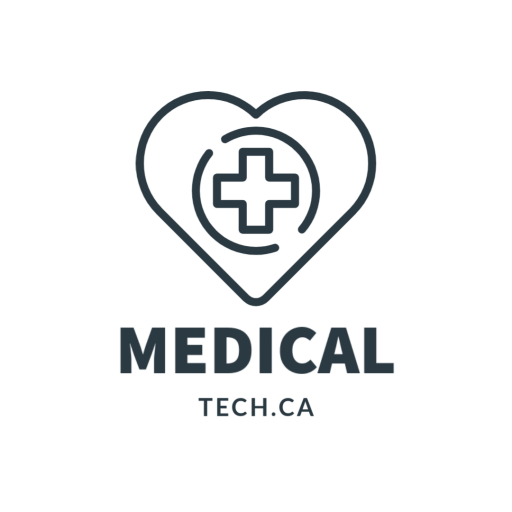
by medicaltechont | Apr 19, 2014 | Cloud, e-Health, eHealth, Security, Software
By Nicole Perlroth
The Heartbleed bug that made news last week drew attention to one of the least understood elements of the Internet: Much of the invisible backbone of websites from Google to Amazon to the FBI built by volunteer programmers in what is known as the open-source community. Heartbleed originated in this community, in which these volunteers, connected over the Internet, work together to build free software, to maintain.
wasWhat makes Heartbleed so dangerous, security experts say, is the so-called OpenSSL code it compromised. That code is just one of many maintained by the open-source community. But it plays a critical role in making our computers and mobile devices safe to use.
“This bug was introduced two years ago, and yet nobody took the time to notice it,” said Steven M. Bellovin, a computer science professor at Columbia University. “Everybody’s job is not anybody’s job.”
Read more at:
http://economictimes.indiatimes.com/articleshow/33958360.cms?utm_source=contentofinterest&utm_medium=text&utm_campaign=cppst

by medicaltechont | Apr 12, 2014 | Cloud, Healthcare, Software, Technology
 The vast majority of those taking advantage of free, open-source software such as OpenSSL do nothing to contribute to its development—and that’s part of the problem.
The vast majority of those taking advantage of free, open-source software such as OpenSSL do nothing to contribute to its development—and that’s part of the problem.
Every day brings new reports of the threats posed by the Heartbleed bug. But the discovery of Heartbleed has also unearthed a scandal that’s plagued the open-source community for years. The scandal is that giant enterprises are doing nothing to contribute to the development, testing and validation of the free software on which they depend. They are takers, pure and simple. Nothing makes this more obvious than the details revealed by the German developer who was responsible for the bug in the first place, Dr. Robin Seggelmann. Dr. Seggelmann, it appears, was spending his end-of-the-year holiday working to fix bugs in the first version of OpenSSL, the encryption software that was becoming a standard on the Internet. While he was at it, Seggelmann developed a way to create a heartbeat function that could keep encrypted sessions open rather than timing out over time.
Read more at http://www.eweek.com/security/heartbleed-openssl-bug-reveals-the-true-cost-of-open-source-software.html

by medicaltechont | Mar 19, 2014 | Google, Samsung, Software, Technology
Through its relentless innovation and discovery, Samsung Electronics West Africa has introduced into the smart phone econ-system Samsung Galaxy S5 with a built-in heart rate sensor that enables new features in the S Health 3.0 app, as well as a finger print scanner that puts it on par with Apple’s TouchID feature on the iPhone 5S.
The new product which is compliant with IP67 dust and water resistant will be available in the global markets next month.
With the enhanced S Health 3.0, the new Galaxy S5 offers more tools to help people stay fit and well. It provides a comprehensive personal fitness tracker to help users monitor and manage their behavior, along with additional tools including a pedometer, diet and exercise records, and a new, built-in heart rate monitor.
Read more

by medicaltechont | Mar 15, 2014 | eHealth, EHR, Software
A Fredericton doctor says the province’s new electronic medical records system has created an uneven playing field.
Dr. Doug Varty was one of about 60 doctors who adopted electronic records before the new system was introduced.
He says he is out tens of thousands of dollars and hundreds of hours of work because the Department of Health and the New Brunswick Medical Society went with a program that no one was using.
In addition, Varty won’t be able to link to the provincial system, he said.
“That’s a very important part of any EMR is being able to download your data — you know, your lab reports, your X-ray reports, consultant reports and all those sorts of things, automatically, and in a timely fashion. And we’re being denied that,” Varty said.
Read more

by medicaltechont | Oct 26, 2013 | Software, Technology
Open-source software may seem like a cheap way to equip your organization with the tools it needs to compete in today’s information economy, but beware: open-source software does have its risks.
THERE IS NO SUCH THING as a free lunch, so they say. And while one might be tempted to argue with that line when it comes to open-source freeware, remember this: if time is money, then programmers and designers have already donated millions of dollars toward writing codes and designing user interfaces for that open-source freeware.
Open-source freeware is not just expensive to produce, however. As many companies have found out, open-source solutions can also be quite pricey – and risky – to maintain over the long run. True, it does not cost you anything to download a program and install it. But what happens after that? Is the program as secure as it says it is? Can you trust the guy who operates the download website? Will the freeware receive upgrades into the foreseeable future? Is it even compatible with other software?
“My firm was spending so much time and effort trying to save a few thousand ringgit, but in the end, we decided it just wasn’t worth the risk,” says Subramaniam, a lawyer who recently experimented with an open-source office suite at his law firm but who quickly abandoned it in favour of a proprietary solution. “Being prudent is one thing; being cheap is quite another.”
Read more at Microsoft

by medicaltechont | Oct 5, 2013 | e-Health, Software, Technology
The computer software company Adobe has been hacked, potentially compromising the data of 2.9 million customers, the company revealed on Thursday.
Adobe said “sophisticated attacks” had been carried out “very recently”.
“Our investigation currently indicates that the attackers accessed Adobe customer IDs and encrypted passwords on our systems,” said Brad Arkin, chief security officer at Adobe.
“We also believe the attackers removed from our systems certain information relating to 2.9 million Adobe customers, including customer names, encrypted credit or debit card numbers, expiration dates, and other information relating to customer orders.”
Arkin said he did not believe the attackers had removed decrypted credit or debit card numbers from its systems.
“We deeply regret that this incident occurred,” he said. Arkin did not specify the level of encryption of the data stolen.
Read more
[polldaddy poll=7451986]



 The vast majority of those taking advantage of free, open-source software such as OpenSSL do nothing to contribute to its development—and that’s part of the problem.
The vast majority of those taking advantage of free, open-source software such as OpenSSL do nothing to contribute to its development—and that’s part of the problem.



